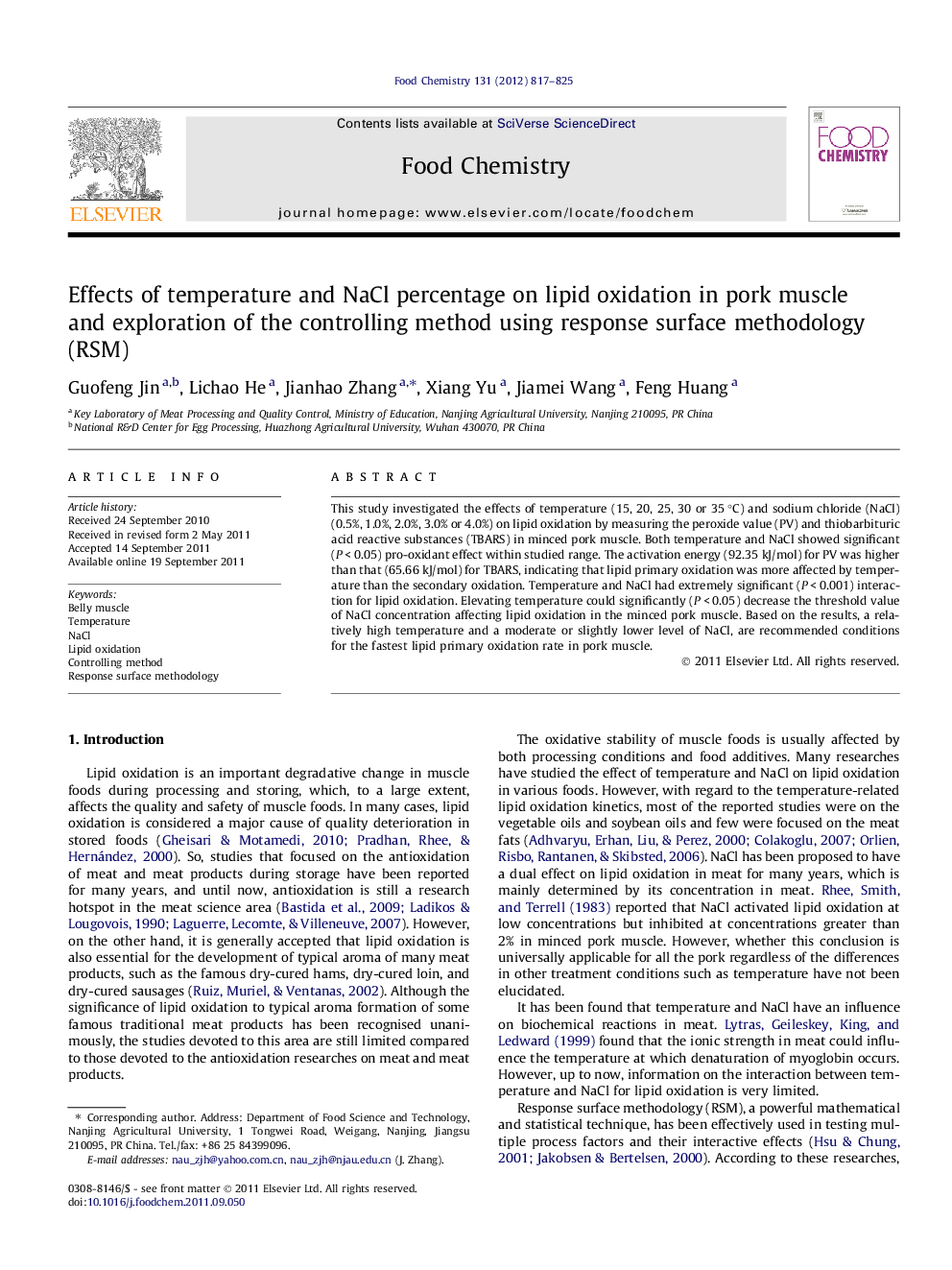| کد مقاله | کد نشریه | سال انتشار | مقاله انگلیسی | نسخه تمام متن |
|---|---|---|---|---|
| 1188116 | 963481 | 2012 | 9 صفحه PDF | دانلود رایگان |

This study investigated the effects of temperature (15, 20, 25, 30 or 35 °C) and sodium chloride (NaCl) (0.5%, 1.0%, 2.0%, 3.0% or 4.0%) on lipid oxidation by measuring the peroxide value (PV) and thiobarbituric acid reactive substances (TBARS) in minced pork muscle. Both temperature and NaCl showed significant (P < 0.05) pro-oxidant effect within studied range. The activation energy (92.35 kJ/mol) for PV was higher than that (65.66 kJ/mol) for TBARS, indicating that lipid primary oxidation was more affected by temperature than the secondary oxidation. Temperature and NaCl had extremely significant (P < 0.001) interaction for lipid oxidation. Elevating temperature could significantly (P < 0.05) decrease the threshold value of NaCl concentration affecting lipid oxidation in the minced pork muscle. Based on the results, a relatively high temperature and a moderate or slightly lower level of NaCl, are recommended conditions for the fastest lipid primary oxidation rate in pork muscle.
► Activation energy for primary lipid oxidation in belly muscle is higher than that for secondary lipid oxidation.
► NaCl at levels of lower than 5% (w/w) in belly muscle could decrease the activation energy for lipid oxidation.
► High temperature and moderate level of NaCl content could in favour of lipid oxidation during belly muscle drying–ripening.
Journal: Food Chemistry - Volume 131, Issue 3, 1 April 2012, Pages 817–825